 |
 |
 |
 |
 |
 |
| |
 |
|

|
|
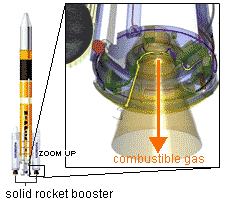 
A
jet of ultra-hot combustible gas eroded the insulation inside the nozzle on the
right-side solid rocket booster. |
|
|
 
A
small hole formed on the nozzle, which caused a leak of combustible gas. |
|
| |
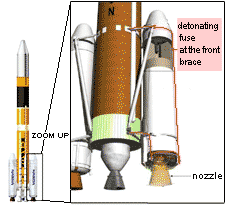 
The
leaking combustible gas heated the detonating fuse that was supposed to detach
the solid rocket booster from the vehicle's body, causing the fuse to malfunction. |
|
|
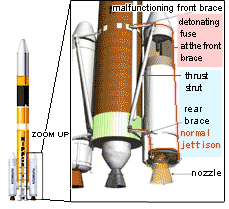 
A signal to jettison the solid rocket booster was sent, but because the detonating fuse malfuctioned, the booster failed to detach.
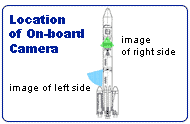
Images from On-board Camera
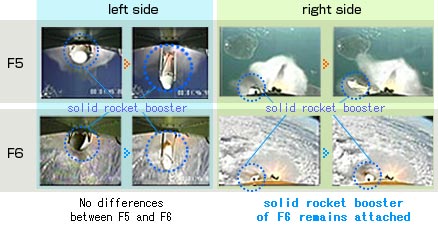 |
|
|

The
rocket was destroyed, as it did not gain the required velocity and elevation
to reach orbit. |
|
| |
 H-IIA Launch Vehicles H-IIA Launch Vehicles
The
H-IIA series of Launch Vehicles used much of the technology of the H-II series,
maintaining reliability while reducing cost by half. The H-IIA are Japan's world-class
rockets, with the capability to carry various satellite weights into a range
of orbits. They are expected to meet the transportation demands of the 21st century. |
|
|
|
 |





